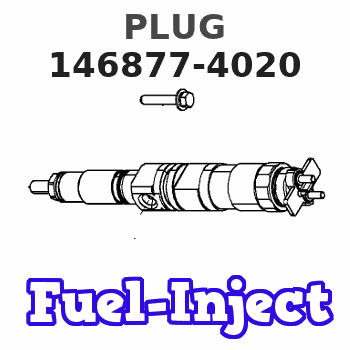Information plug
BOSCH
9 461 615 614
9461615614
ZEXEL
146877-4020
1468774020
ISUZU
8971443890
8971443890

Rating:
Include in ###:
Number on scheme 117/1


1047414940
as PLUG
1047417400
as PLUG
L=8.2
1047417420
as PLUG
1047417430
as PLUG
L=8.2
1047417440
as PLUG
1047417490
as PLUG
L=8.2
1047427044
as PLUG
1047427113
as PLUG
L=8.2
1047427270
as PLUG
1047427272
as PLUG
L=8.2
1047427310
as PLUG
1047427381
as PLUG
L=8.2
1047427390
as PLUG
1047427450
as PLUG
L=8.2
1047427451
as PLUG
1047427460
as PLUG
L=8.2
1047427461
as PLUG
Cross reference number
Zexel num
Bosch num
Firm num
Name
146877-4020
9 461 615 614
8971443890 ISUZU
PLUG
C 11FV CLOSING PLUG parts(VE) Others
C 11FV CLOSING PLUG parts(VE) Others
Information:
Proper operation and maintenance are key factors in obtaining the maximum life and economy of the engine. Following the directions in this manual will lower operating costs.The time needed for the engine to reach the normal mode of operation is usually less than the time taken for a walk-around-inspection of the engine.After the engine is started and the cold low idle operation is completed, the engine can be operated at rated speed and low power. The engine will reach normal operating temperature faster when operated at rated speed and low power demand than when idled at no load. Typically the engine should be up to operating temperature in a few minutes.Gauges readings should be observed and the data record frequently while the engine is operating. Comparing the data over time will help determine normal readings for each gauge, and help detect abnormal operating developments. Significant changes in the readings should be investigated.Fuel Conservation Practices
The efficiency of your engine can affect the fuel economy. Caterpillar's state-of-the-art design and manufacturing technology provides maximum fuel efficiency in all applications. Follow the recommended operating and maintenance procedures to attain optimum performance for the life of your engine.* Avoid fuel spillage. Fuel expands when warmed, and may overflow from a too-full fuel tank. Inspect fuel lines for leaks, and repair immediately.* Be aware of the heat values of different fuels. Use only recommended fuels.* Avoid unnecessary idling. Shut the engine off rather than idle for long periods of time (unless the temperature is extremely cold).* Observe the air service indicator frequently, and keep the air cleaner elements clean.* Make sure that turbochargers are operating correctly so that the proper air/fuel ratio is maintained. Clean exhaust indicated proper functioning.* Maintain a good electrical system. One bad battery cell will overwork the alternator, consuming excess power and fuel.* Make sure that belts are properly adjusted and in good condition.* Make sure that all air hose connections are tight and do not leak.* Cold engines consume excess fuel. Utilize jacket water and exhaust system heat when possible. Keep radiator fins and water pumps clean and in good repair. Never operate without thermostats. All of these items will help maintain operating temperatures.* Fuel system settings and altitude limits are stamped on the engine Information Plate. If an engine is moved to a higher altitude, settings must be changed by a Caterpillar dealer in order to prevent turbocharger damage and provide maximum engine efficiency. Engines can be operated safely at lower altitudes, but will deliver less horsepower. The fuel settings should be changed by a Caterpillar dealer to obtain the rated horsepower.
The efficiency of your engine can affect the fuel economy. Caterpillar's state-of-the-art design and manufacturing technology provides maximum fuel efficiency in all applications. Follow the recommended operating and maintenance procedures to attain optimum performance for the life of your engine.* Avoid fuel spillage. Fuel expands when warmed, and may overflow from a too-full fuel tank. Inspect fuel lines for leaks, and repair immediately.* Be aware of the heat values of different fuels. Use only recommended fuels.* Avoid unnecessary idling. Shut the engine off rather than idle for long periods of time (unless the temperature is extremely cold).* Observe the air service indicator frequently, and keep the air cleaner elements clean.* Make sure that turbochargers are operating correctly so that the proper air/fuel ratio is maintained. Clean exhaust indicated proper functioning.* Maintain a good electrical system. One bad battery cell will overwork the alternator, consuming excess power and fuel.* Make sure that belts are properly adjusted and in good condition.* Make sure that all air hose connections are tight and do not leak.* Cold engines consume excess fuel. Utilize jacket water and exhaust system heat when possible. Keep radiator fins and water pumps clean and in good repair. Never operate without thermostats. All of these items will help maintain operating temperatures.* Fuel system settings and altitude limits are stamped on the engine Information Plate. If an engine is moved to a higher altitude, settings must be changed by a Caterpillar dealer in order to prevent turbocharger damage and provide maximum engine efficiency. Engines can be operated safely at lower altitudes, but will deliver less horsepower. The fuel settings should be changed by a Caterpillar dealer to obtain the rated horsepower.